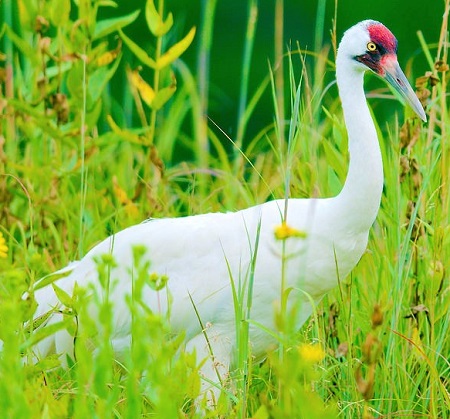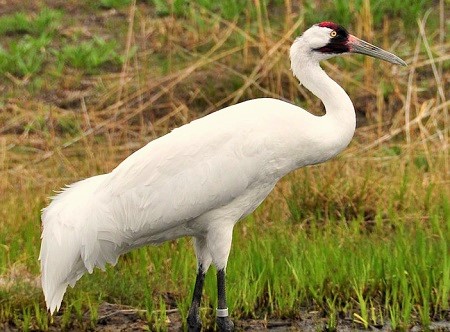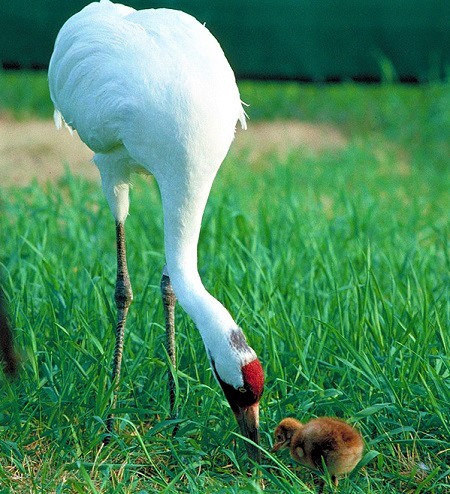Whooping Crane
The Whooping Crane is an endangered Crane species named for its whooping sound. It’s the tallest bird in North America, with a height of 1.5 m, and a wingspan of 2.3 m. The Whooping crane is a white bird with a red crown and a long, dark, pointed bill. It has also black markings on the face and tips of the wings, which are only visible when out-stretched.
Whooping cranes undertake a spectacular migration of over 4,000 kilometres from summer nesting grounds in the north, to winter feeding grounds in the south. They arrive at the breeding area in April, and pairs return to the same nesting territory over consecutive years.
Generally, a Whooping crane pair produces two eggs per clutch, although only one chick is usually reared to maturity. Both parents take part in incubating and rearing the chick, which hatches after roughly one month. In September, the first Whooping crane individuals leave for the return migration south, as the cold begins to set in. They reach sexual maturity by the age of 3 – 5 years.
Previously, Whooping cranes were found over much of North America, from the Arctic coast in the north to central Mexico. And from Utah in the west to New Jersey and Florida, but now they are limited to specific areas. Two distinct migratory populations summer in north-western Canada and central Wisconsin and winter along the Gulf Coast of Texas and the south-eastern United States, respectively. Small, non-migratory populations live in central Florida and coastal Louisiana.
| Place of origin | North America |
| Use | Preservation |
| Weight | Male: 7.3 kg female: 6.2 kg |
| Egg color | Dark cream with red dots |



